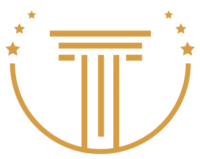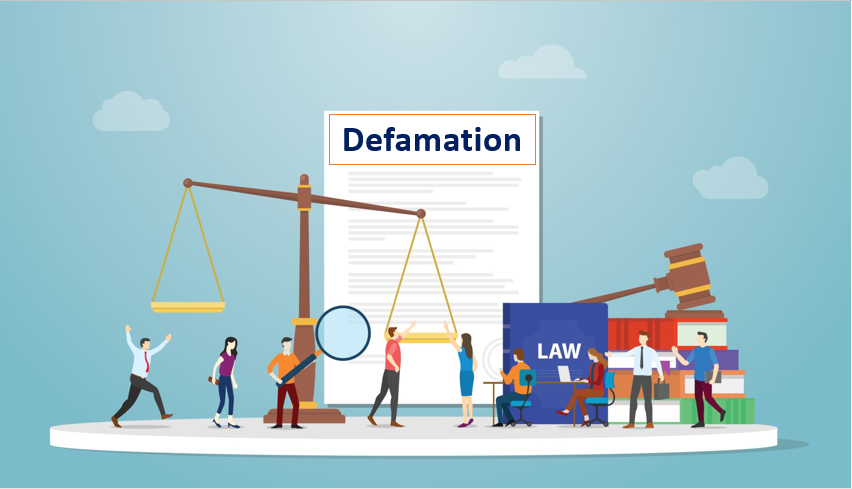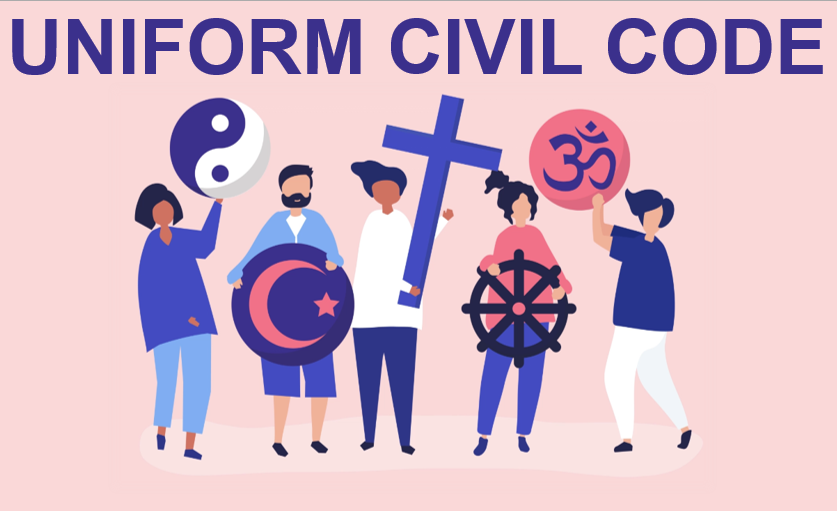Published on 21st March 2025
Authored By: Gautami Gupta
Amity University, Noida
Introduction
Social media has revolutionized communication, enabling instant access to information and unprecedented levels of connectivity. However, this digital transformation has also brought significant legal, ethical, and societal challenges. Governments, legal scholars, and civil society organizations worldwide grapple with the task of regulating social media to ensure it fosters freedom while mitigating harm. This legal article delves into the legal intricacies of regulating social media, balancing the fundamental right to free speech with the responsibility to prevent social media misuse too.
The Legal Framework for Freedom of Speech
Freedom of speech is a cornerstone of democratic societies, enshrined in Article 19 of the Universal Declaration of Human Rights (UDHR) and various national constitutions. In India, Article 19(1)(a) of the Constitution guarantees the right to free speech and expression. However, this right is not absolute. Article 19(2) permits reasonable restrictions on grounds such as public order, defamation, and morality. These limitations form the basis for regulating speech on social media.
Similarly, in the United States, the First Amendment protects free speech but excludes categories like incitement to violence, obscenity, and libel, as clarified in Chaplinsky v. New Hampshire (1942). The U.S. Supreme Court case Chaplinsky v. New Hampshire, 315 U.S. 568 (1942), established a significant precedent for limiting free speech in specific circumstances. The decision introduced the concept of “fighting words”, a category of speech that is not protected under the First Amendment of the U.S. Constitution. The principles established in Chaplinsky provide a foundation for regulating harmful content on social media platforms, particularly when balancing free speech with societal interests like public order and individual dignity. European nations also recognize free expression under Article 10 of the European Convention on Human Rights, subject to proportional restrictions.
Challenges in Regulating Social Media
Firstly, there is Content Moderation and Censorship: Social media platforms employ content moderation policies to filter harmful content. However, these policies often lack consistency and transparency, leading to accusations of arbitrary censorship. In Shreya Singhal v. Union of India (2015), the Supreme Court of India struck down Section 66A of the Information Technology Act, 2000, as unconstitutional for being vague and overly broad. The case highlighted the need for precision in laws regulating online speech.
Secondly, there is Misinformation and Fake News: The rapid spread of misinformation, particularly during elections and public health crises, poses a significant threat. In India, fake news has been linked to incidents of mob violence. Courts have addressed this issue in cases like Re: Destruction of Public and Private Properties v. State of Andhra Pradesh (2009), emphasizing the responsibility of authorities to curb misinformation. The judgment serves as a precedent for addressing liability in cases involving destruction during protests and provides a framework for minimizing damages. The impact was that the law enforcement agencies improved their preparedness for managing public gatherings, leveraging the use of technology for monitoring and evidence collection.
Further, there is spread Hate Speech and Online Harassment: Hate speech on social media fuels division and violence. The Indian Penal Code (Sections 153A and 295A) and the IT Act (Section 69A) address hate speech, but enforcement remains inconsistent. The Supreme Court, in Pravasi Bhalai Sangathan v. Union of India (2014), underscored the need for a balanced approach that safeguards free speech while preventing harm. Pravasi Bhalai Sangathan, a non-governmental organization, filed a writ petition in the Supreme Court, expressing concern over the increasing prevalence of hate speech, particularly in political discourse. The petition argued that hate speech promotes discrimination, hostility, and violence against specific groups and sought legal measures to curb such practices effectively. The judgment highlighted the role of civil society, media, and individuals in countering hate speech. The Court emphasized the importance of fostering tolerance, promoting education, and encouraging responsible behaviour in public discourse. In the digital age, the principles of this case continue to influence discussions on regulating harmful content on social media and ensuring accountability in online and offline discourse.
Moreover, there is the prevalence of Algorithmic Amplification: Algorithms on social media platforms prioritize content based on engagement, often amplifying sensational or divisive material. This creates echo chambers and exacerbates polarization. Regulatory frameworks must address algorithmic accountability without stifling innovation.
Lastly, there is a surge of Jurisdictional and Cross-Border Issues: Social media transcends national boundaries, complicating enforcement. Content legal in one jurisdiction may be illegal in another, as seen in cases involving global takedown requests. In Google LLC v. Equustek Solutions Inc. (2017), the Supreme Court of Canada upheld a global de-indexing order, raising questions about the extraterritorial reach of national laws. It was established that courts in Canada could issue global injunctions compelling internet companies to take down content worldwide under specific circumstances. The Supreme Court of Canada upheld the global injunction against Google by a 7-2 majority, establishing several important principles. The Court determined that it had jurisdiction over Google because the company carried on business in Canada through its search engine services. Even though Google was not a party to the original IP dispute, its search engine facilitated Datalink’s continued infringement, justifying its inclusion in the case. The Court acknowledged concerns about conflicting laws across jurisdictions but emphasized that the injunction was enforceable as it sought to protect Canadian laws without interfering unnecessarily with foreign legal systems. The principles established in this case are increasingly relevant in the context of social media platforms and their global operations. Key implications include:
1.The potential for courts to issue global takedown orders against social media companies for harmful or illegal content.
2.The need to balance local legal obligations with the platforms’ global reach and responsibilities.
3.The importance of international cooperation to create consistent standards for addressing illegal content on the internet.
Existing Regulatory Frameworks
- India: The Information Technology (Intermediary Guidelines and Digital Media Ethics Code) Rules, 2021, impose obligations on intermediaries to remove unlawful content and ensure transparency. However, these rules have faced challenges over concerns of overreach and potential stifling of dissent, as in the ongoing litigation in The Wire v. Union of India. The Wire v. Union of India is a significant case in the context of free speech, journalistic freedom, and intermediary liability in India, focusing on the tension between government regulations and constitutional protections of free expression. As the judiciary navigates this complex issue and it is an ongoing case. Hence, the case will likely set a precedent for the extent to which governments can regulate online spaces without encroaching upon fundamental rights. The final judgment will be instrumental in shaping the future of digital governance and free expression in India.
- United States: Section 230 of the Communications Decency Act provides immunity to intermediaries for third-party content. While this provision has enabled the growth of social media, it has also shielded platforms from accountability. The debate over reforming Section 230 continues, with proponents advocating for increased liability.
- European Union: The EU’s Digital Services Act (DSA) and General Data Protection Regulation (GDPR) set stringent standards for content moderation, transparency, and data protection. The DSA requires platforms to mitigate systemic risks, including misinformation and illegal content.
Balancing Freedom and Responsibility
- Legal Safeguards: Laws regulating social media must be narrowly tailored to address specific harms without overstepping into censorship. The principle of proportionality, as emphasized in Anuradha Bhasin v. Union of India (2020), is crucial in assessing restrictions on free speech. The case of Anuradha Bhasin v. Union of India is a pivotal judgment of the Supreme Court of India that addresses the intersection of national security, freedom of expression, and the right to access the internet. This case arose in the backdrop of the abrogation of Article 370 of the Constitution. The Supreme Court delivered a nuanced judgment, emphasizing the need to balance national security and public order with individual rights. While it upheld the constitutionality of internet restrictions under exceptional circumstances, it directed the government to:
- Review all orders related to the restrictions in J&K.
- Publish the orders to ensure transparency and allow for judicial review.
- Reassess the necessity and proportionality of the restrictions.
The Court, however, refrained from declaring the internet ban in J&K unconstitutional, deferring to the government’s claims of security concerns.
2.Transparency and Accountability: Platforms should disclose content moderation policies and algorithmic processes. Independent audits and oversight mechanisms can enhance accountability. The Supreme Court in PUCL v. Union of India (1997) stressed the importance of transparency in governance, a principle equally applicable to digital platforms. The Court, in this case, established important safeguards to protect the right to privacy, particularly in the context of state surveillance. The Court reaffirmed that the right to privacy is a fundamental right derived from Articles 19 and 21 of the Constitution. Telephone tapping constitutes a serious invasion of this right unless carried out in accordance with the law. The Court emphasized the proportionality principle, requiring that any interference with privacy must be necessary and proportionate to the intended objective. The PUCL v. Union of India (1997) case remains a cornerstone in the jurisprudence on privacy and state surveillance in India. By recognizing privacy as a fundamental right and imposing procedural safeguards on telephone tapping, the judgment set important limits on executive power.
3.Self-Regulation and Co-Regulation: Platforms must adopt robust self-regulatory measures, complemented by co-regulatory frameworks involving government oversight. The Oversight Board established by Meta exemplifies self-regulation, though its effectiveness remains debated.
4.Digital Literacy: Empowering users to critically evaluate information is essential. Governments and civil society must invest in digital literacy programs to combat misinformation and foster responsible online behaviour.
5.Global Cooperation: International frameworks, such as the Christchurch Call to Action, demonstrate the potential for collaborative efforts to combat online extremism. Nations must work together to establish consistent standards while respecting cultural and legal differences.
Case Studies and Precedents
- India:
- Shreya Singhal v. Union of India (2015): This landmark judgment struck down Section 66A of the IT Act, which criminalized sending offensive messages online. The court held that the provision was vague, overly broad, and violated the constitutional right to free speech. This case serves as a precedent for ensuring that laws regulating online speech are precise and do not stifle legitimate expression.
- Anuradha Bhasin v. Union of India (2020): The case dealt with internet shutdowns in Jammu and Kashmir. The Supreme Court emphasized the necessity of proportionality in restrictions on internet access, stating that such measures must be temporary, necessary, and justified.
- United States:
- Reno v. ACLU (1997): The U.S. Supreme Court invalidated provisions of the Communications Decency Act that restricted indecent online content. The court emphasized that the internet is a unique and valuable medium for free speech, deserving robust protection.
- Packingham v. North Carolina (2017): The court struck down a law that prohibited registered sex offenders from accessing social media platforms. The ruling recognized social media as a vital space for exercising free speech in the digital age.
- European Union:
- Glawischnig-Piesczek v. Facebook Ireland Limited (2019): The European Court of Justice held that platforms could be required to remove identical and equivalent illegal content globally. This decision highlights the growing trend toward holding platforms accountable for content moderation.
Solutions for Regulating Social Media
- Clear and Specific Legislation: Governments must enact laws that clearly define prohibited content, such as hate speech and misinformation, to avoid arbitrary enforcement. Regular updates to legislation are necessary to address emerging challenges.
- Algorithmic Transparency: Platforms should disclose how algorithms prioritize and amplify content. Independent audits and mechanisms to address algorithmic bias can foster accountability.
- Enhanced Oversight: Establishing independent regulatory bodies to oversee content moderation practices can prevent abuse of power by platforms or governments. These bodies should operate transparently and ensure due process.
- User Empowerment: Providing users with tools to flag and filter content can promote a safer online environment. Platforms should also invest in educating users about recognizing and combating misinformation.
- Strengthened International Cooperation: Countries should collaborate to develop consistent global standards for regulating social media while respecting national sovereignty. Initiatives like the Christchurch Call to Action can serve as models.
- Incentives for Self-Regulation: Governments can encourage platforms to adopt robust self-regulation by offering incentives such as reduced liability or recognition for compliance with best practices.
- Focus on Digital Literacy: Educational programs aimed at enhancing digital literacy can equip users to critically evaluate online content and reduce susceptibility to misinformation and manipulation.
- Responsive and Adaptive Regulation: Regulatory frameworks must be flexible to adapt to technological advancements and evolving societal needs. Regular reviews and stakeholder consultations can ensure relevance and effectiveness.
Conclusion
Regulating social media requires a delicate balance between safeguarding free speech and ensuring accountability. Overregulation risks stifling innovation and expression, while under regulation can lead to significant harm. Policymakers must adopt a holistic approach that integrates legal safeguards, platform accountability, user empowerment, and global cooperation. As technology evolves, the legal and ethical frameworks governing social media must adapt to ensure a digital ecosystem that is both free and fair.


